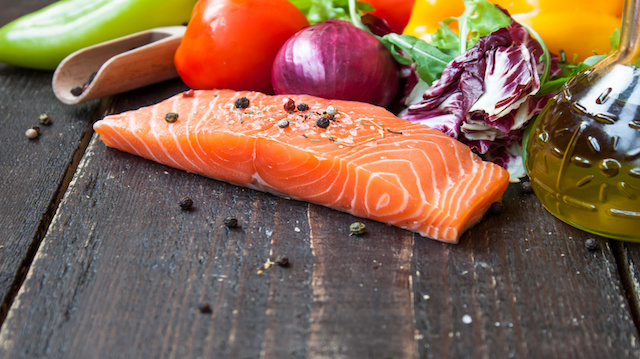
The key differences between farmed and wild-caught salmon are fairly well known, especially when it comes to antibiotics and GMO concerns. Although there are clear issues surrounding salmon farms, you have the power to choose nutritionally-dense, wild-caught salmon, right? Well, not exactly.
According to a recent report, Oceana, an international organization that focuses on protecting the world’s oceans, found that nearly half of the 82 salmon samples it collected from restaurants and grocery stores were in fact mislabeled. What does this mean? Well, consumers are being misled into purchasing products they believe are making a difference. Consumers are willing to spend more in order to access the healthiest sources of salmon while aiming to also protect the environment.
Here’s the kicker — instead of purchasing wild-caught, consumers are actually being sold farmed salmon. It’s also important to note that consumers are more likely to be misled by restaurants, compared to grocery stores (67 percent vs. 20 percent). This is eye-opening and, of course, highly upsetting.
Article: Largest US Grocers Promise Not to Sell ‘Frankensalmon’
Confirmed through DNA testing, samples were deemed “mislabeled” based on one of two set criteria. The first, as mentioned, were samples labeled as wild, Alaskan, or Pacific salmon, but were actually farmed. The second, samples were labeled as either king or sockeye, yet they turned out to be another species of fish entirely, such as rainbow trout.
So, what’s the big deal?
There’s a reason why individuals are seeking wild-caught salmon instead of farmed options. Not only are they less contaminated with toxins and antibiotics, but they’re also much more nutritionally dense. In terms of omega-3 fatty acids, minerals, antioxidants, and vitamins, wild salmon is far superior. Also, wild-caught salmon consume a natural diet, whereas farmed salmon are fed GMO corn, soy, and grain.
Report: New Report Estimates Death Toll From Antibiotics… And It’s Not Pretty
 When it comes to wild salmon fishing within the United States, American fishermen catch enough wild salmon annually to supply their country with 80 percent of the demand. The reality, however, is that over 70 percent of this wild salmon is exported. This results, of course, in the utilization of cheaper, farmed salmon.
When it comes to wild salmon fishing within the United States, American fishermen catch enough wild salmon annually to supply their country with 80 percent of the demand. The reality, however, is that over 70 percent of this wild salmon is exported. This results, of course, in the utilization of cheaper, farmed salmon.
Increasing awareness regarding current fishing practices needs to become a priority, as a focus on sustainability has never been so crucial. This leads us to a very important issue surrounding our modern food supply. We’re in the dark — not knowing exactly where our food comes from or how it’s impacting the world around us, not to mention our health.
Although Oceana’s latest report is shocking, seafood fraud has been uncovered before. According to The Atlantic, less than one percent of imported seafood is inspected for correct labeling. This is why it’s important to know where your food comes from.
Luckily, actions are currently being taken to better protect consumers and the environment. For now, it’s important to be aware of seafood fraud. Don’t be shy to ask questions — when and where was your fish caught? Also, be more conscious of the price — if it looks too good to be true, then it probably is.
—The Alternative Daily
Sources:
http://www.huffingtonpost.com/andrew-sharpless/salmon-for-dinner-your-me_b_8406916.html
http://www.theatlantic.com/business/archive/2015/03/bait-and-switch/388126
http://usa.oceana.org/publications/reports/oceana-reveals-mislabeling-americas-favorite-fish-salmon

